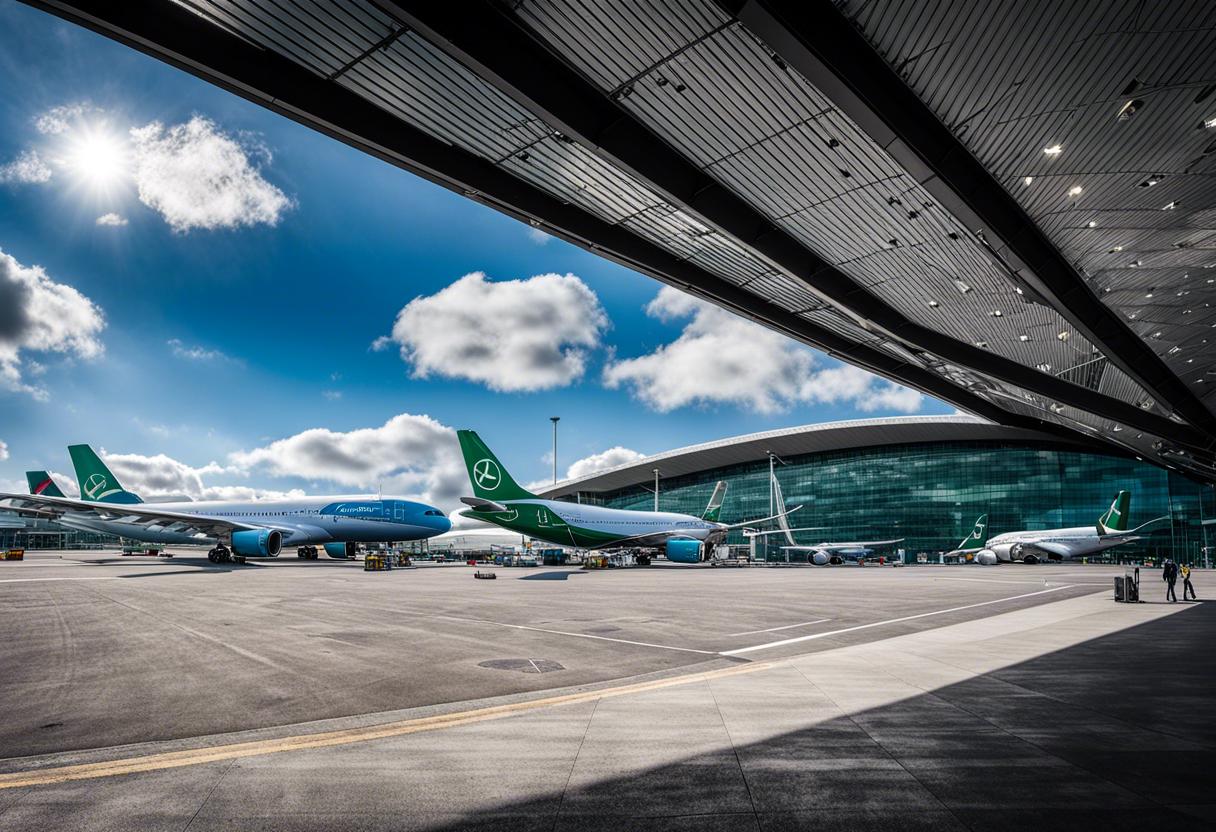DAA’s contentious plan to augment Dublin Airport’s capacity, with the aim of handling up to 40 million passengers annually, features lesser-known elements such as the removal of several earlier structures, including two original hangars from 1940 and the North Terminal, inaugurated in 1959. However, Collinstown Airport’s original terminal building, known for its ship-like curved structure and stacked floors, remains untouched by the fresh proposals. Despite being overshadowed by the airport’s later developments, this terminal persists as a testament to the bygone romantic period of aviation and Irish modernism of the 1930s. Architectural expert Paul Larmour praises it as “a lasting tribute to the essence of Irish modernism in the 1930s,”. This edifice was the creation of a highly-skilled group of young architects led by Desmond FitzGerald, elder sibling of the late Prime Minister Garret FitzGerald, and was finished in December 1939.
Another significant structure, albeit less renowned, is the North Terminal, constructed parallel to the original terminal to meet increasing demand, initially for transatlantic and European flights, then for all arrivals, while the original terminal handled departures until the utilitarian Terminal 1 was launched in 1972. From that point, the North Terminal provided services for VIP arrivals and departures, including state visits and foreign tours by Irish presidents, and for Irish soldiers engaged in overseas UN missions. Later, it served as a DAA training centre and airport police station.
The building’s design was the work of Leo Carroll, the leading architect at the Department of Transport and Power. Architect Angela Rolfe describes it as “a rare manifestation of modernist infrastructural architecture, demonstrating a thoughtful response to context, volume, and materiality… encapsulating the progressive and inventive aspirations of Ireland”.
A former chief architect of the Office of Public Works, Rolfe, has presented a proposal to Fingal County Council concerning the proposed expansion plans of Dublin Airport. She endeavoured to highlight the threat posed to the unique “cultural heritage” of the area if the airport’s North Terminal and original hangars were to be knocked down by the Dublin Airport Authority (DAA). Rolfe highlighted the North Terminal’s architectural significance, describing it as a prime example of carefully planned design, characterised by a sophisticated and rhythmically crafted roof with extensive curtain glass panels. She pointed out distinct design attributes including elegant spiral staircases, intricate balustrading, and conspicuous terrazzo flooring, all of which are still present in the terminal, albeit amidst substantial partitioning.
She concluded that the North Terminal is perceived as an iconic social, cultural and architectural monument, representing the progressive stage of contemporary design within the realms of the 20th-century architectural heritage. Comparable with the airport’s original terminal and various modernist icons such as Michael Scott’s Busáras on Store Street, its importance is undeniable. “The North Terminal, an integral part of the original airport complex, signifies the initial era of aviation—which is an embodiment of a modern Ireland that was globally ahead of its time,” she added. She also pointed out that even DAA’s heritage impact evaluation admits that the North Terminal was designed purposefully to mirror its “older sibling”.
Rolfe further revealed that the twin large hangars situated at each end of the original terminal, designed under the supervision of TJ Byrne, the leading architect at the OPW who was also the architect behind the remodelling of the GPO, Custom House and the Four Courts in the 20s, made an essential contribution to its overall appearance. She stressed, “The continued unavailability of a conservation management plan for buildings representative of the evolution of air travel and portraying a future-oriented modern Ireland on an international scale, signifies the lack of attention and care directed towards this unique representation of Ireland’s 20th-century cultural heritage”.
Strongly opposing the tearing down of the three buildings, Rolfe advocated for the council to reject the permission. She urged for a “considerate proposal” from the DAA to refurbish, restore and repurpose the North Terminal, as it is situated within the boundary of a listed building, specifically the original 1939 terminal.
Fingal County Council has issued a comprehensive 80-point query demanding more explanation about DAA’s proposal to extend the airport, prominently noting their objection to the destruction of the North Terminal. The Council recognises this terminal as a structure of national importance and therefore exhorts DAA to either provide an in-depth rationale for its proposed demolition, or to seriously consider alternative solutions, such as its “sensitive modification”.

